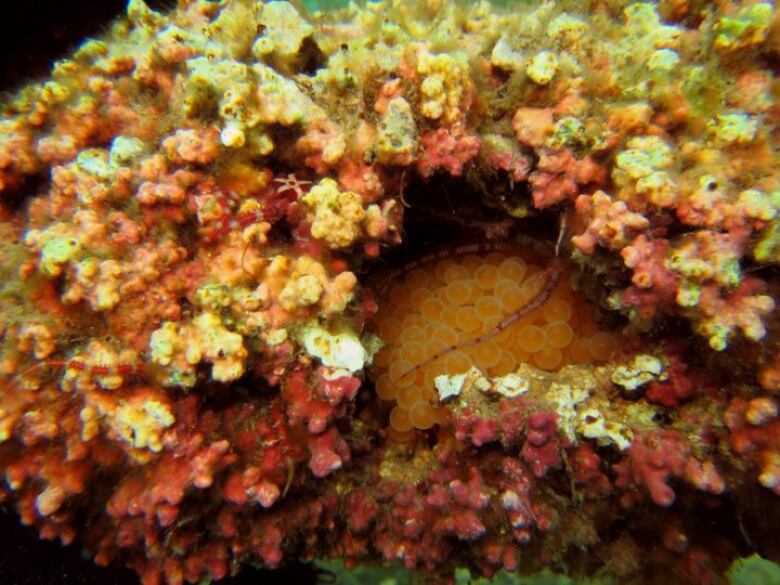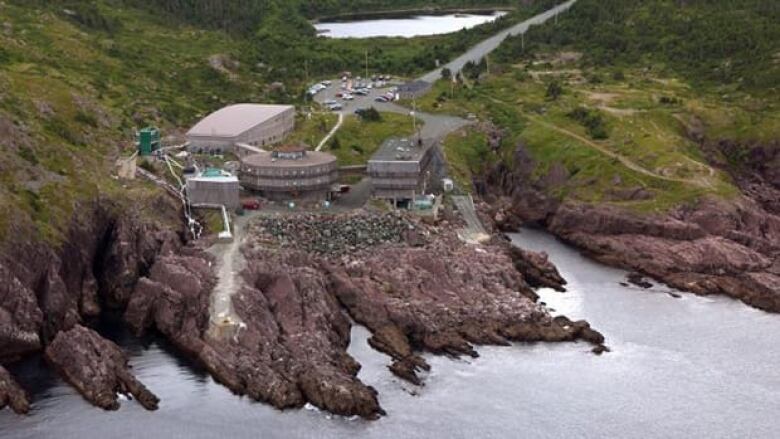Why a rock-hard pink seaweed is known as a 'hotspot of biodiversity'

Think of something that'spink and that's as hard as a rock.
No, it's not Double Bubble, or any other kind of hard gum.
It's a seaweed, and it's remarkable.
When you hear "seaweed," you're probably thinking of a green plant gently swaying with the current. But rhodoliths are pink, hard and lie unattached on the ocean bottom.
Imagine ocean tumbleweeds.
These strange organisms are so little known that Pat Gagnon had already earned his doctorate in marine ecology before he first encountered them on the Newfoundland seafloor. Now he studies them with his students at the Ocean Science Centrein Logy Bay, just north of St. John's.
"These guys could be, I'm thinking, at least 100 years," saidGagnon, describing how long rhodoliths can typically live and how slowly they can grow.

Unlike kelp, which is among the fastest growing organisms on the planet,rhodolithsgrow just a little over a fingernail thickness per year.
Despite this slow growth,Gagnonhas foundrhodolithsthe size of soccer balls, which means they can live for an incredibly long time.
"In California, they foundrhodolithsin deep water that are thought to be at least 1,000 years old. So they can grow for a really long time."
Pretty in pink
In addition to chlorophyll, which gives most plants the distinctive green colour, rhodoliths have a pigment called phycoerythrin which reflects red light and absorbs blue light for photosynthesis.
This gives them, and other red algae, their pink colour.
Much like corals, rhodoliths take calcium from the water and grow a hard calcium carbonate skeleton. This puts rhodoliths in the large category of coralline algae.
Unfortunately this also means that, like corals, rhodoliths are sensitive to ocean acidification and subsequent bleaching.
In California, they foundrhodolithsin deep water that are thought to be at least 1,000 years old. So they can grow for a really long time.- Pat Gagnon
Because they're so long lived and grow so slowly, recovering from any damage takes a long time. Human activities like dredging can break the rhodolith skeleton and sediment kicked up off the ocean floor can cover their bodies, preventing photosynthesis.
"Too much sediment could interfere with that photosynthesis, which means that over time their growth could be reduced because of that, and they could even die from it," said Gagnon.
Gagnon said that rhodoliths are ecologically important "hotspots of biodiversity". Because they grow in a branching pattern there are lots of nooks and crevices for critters to live in. Imagine it like branches of trees, which provide space for birds to hide and nest in.
"If you take rhodoliths from Newfoundland, usually you'll find a bunch of holes at their surface. And these holes provide a habitat for a bunch of invertebrates to recruit."
Gagnon said the habitat provided by the rhodoliths is likely important for commercial species as well.
"As a matter of fact, we found rhodoliths that are empty in the center, and which are filled with fish eggs," said Gagnon, "so we know there's some fish species that use rhodoliths as a habitat to lay their eggs."
There's still relatively little known about this strange seaweed, but Gagnon and his students are working hard to find out more. Rhodoliths are found all over the world, from the tropics to polar regions, so it's certainly important to understand what role they play in the ecosystem.
On display

If you want to see real-life rhodoliths and other cool ocean life, head down to the Ocean Sciences Centre,where experienced interpreters will introduce you to critters in the touch tanks.












_(720p).jpg)


 OFFICIAL HD MUSIC VIDEO.jpg)
.jpg)



























































































